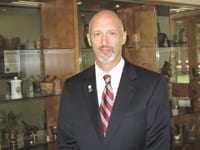It’s All in the Details – When Selling Your Practice, Perform Proper Due Diligence
There are numerous reasons why owners choose to sell their businesses. One of the obvious reasons is that the resulting firm can provide better client service by being able to offer a wider range of services. Logically, doing so should allow the practice to grow and be more competitive and profitable in the future.
Some physician owners get so swept away with the idea of merging that they jump into the deal without proper planning. They do not bother to check out such basic details as their merger partner’s technology status or staffing issues. They are often too polite to insist on taking an in-depth look at the other practice’s client base, realization,write off percentages, or owner compensation.
They become so enchanted with becoming bigger that they forget to ensure they will also become better. They skip key steps in due diligence. Consequently, some physician owners make bad deals when they sell or merge. They become entangled in unmanageable situations or sell their business for too low a price.
Take Stock
If you are thinking about selling or merging your practice, the first thing to consider is its value. Most medical practices usually do not offer a tangible product, and their primary assets are people. This means the most valuable assets are generally intangible in nature. Brokers often talk about rules of thumb for valuing professional practices. Rules of thumb may indicate some sort of a valuation range, but should not be used as the only valuation method. More than in other kinds of businesses, the nature of the client base tends to differentiate the value of one practice from another. For example, a medical practice catering to a well-to-do client base in an upscale community will often generate much higher revenue than a practice providing the same services in a workingclass area.
Roll-ups of medical practices present unique challenges. There can be fundamental differences in the nature of the various practices. Even within the same specialty, there can be significant practice-to practice variations in attitudes toward the role of the practice versus its principals. Compensation models can also vary widely between practices.
Another major consideration is loss of independence. Most physicians in small groups like owning and running their own practices. As owners, they like controlling their own destinies through their companies. If that is the reason an owner is operating an independent practice, consider whether the acquisition tradeoff will be worth it in five, 10, or 20 years. Physician owners might find it painful to no longer have the final say in the direction and policies of the firm. For many, it may be a change that they will be unable to adjust to.
Sometimes, after evaluating both the financial and non-financial consequences of merging their practices, the owners conclude that they would prefer to sell. Many medical practices are still operated as C corporations for tax purposes. For these practices, it is usually possible to drain off essentially all of the taxable income of a C corporation by paying salaries and benefits to the shareholders/employees. Thus, in operation, many small corporations actually work like S corporations (i.e., the corporation does not pay any tax because its earnings are taxed to the shareholders).
However, in the year of a sale, the increased salary could be questioned by the IRS. The corporate employer must be able to justify the amount of compensation paid and deducted by evaluating factors such as comparable salaries in similar industries, experience and expertise of the employee shareholder, economic conditions, and unique contributions made by the employee- shareholder (such as the ability to make technological innovations or exceptional marketing capabilities).
Typically, the IRS attempts to recast what it considers to be excessive compensation as dividends paid to the employee-shareholder, because dividends are not deductible by the C-corporation employer but must be reported as income by the employee shareholder and taxed at a 2013 rate of 0{06cf2b9696b159f874511d23dbc893eb1ac83014175ed30550cfff22781411e5} or 15{06cf2b9696b159f874511d23dbc893eb1ac83014175ed30550cfff22781411e5} plus the additional 3.8{06cf2b9696b159f874511d23dbc893eb1ac83014175ed30550cfff22781411e5} tax on passive income. But even if the IRS does not challenge the amount of compensation, the owners are still paying tax on the gain from the sale of the practice as ordinary income subject to all employment taxes versus capital gain.
The sale of the corporate stock would seem to be the easiest answer since it would qualify for capital gain treatment, except that most acquirers do not want the liability associated with purchasing stock, preferring instead to purchase assets. To avoid the potential for the IRS finding that the owners received excess compensation as well as obtained capital gain treatment, planners have been resorting to other techniques, not all of which work.
Practice Goodwill
More than most other types of businesses, the value of a medical practice depends on the skills, reputation, and efforts of individual practitioners.
Therefore, a portion of the total value is due to the personal reputation or skill of the owner and may not be easily transferable to a buyer. This is known as professional goodwill. In certain cases, professional goodwill has no value to a buyer. Practice goodwill, on the other hand, results from the practice’s successful operation and is generally a component of most practice-valuation estimates.
In a 2002 case involving a dental practice, the selling sole shareholder had longstanding employment and non-compete agreements in place with his corporation. He sold his practice to another dentist in 2002, under the terms of an asset-purchase agreement providing that he would personally receive $549,900 for his personal goodwill, and the corporation would receive $47,100 for its assets. Additionally, the shareholder individually received an additional $16,000 for entering into a non-compete agreement with the buyer. He reported the sale of goodwill on his individual return as long-term capital gain.
The IRS challenged that, asserting that the goodwill was a corporate asset and the cash paid to the individual was a dividend. It argued that an employee cannot own the goodwill if he has a non-compete agreement with the corporation because the non-compete restrictions effectively transform the employee’s personal relationships with clients into a corporate asset. The court found that any goodwill from the dentist’s personal relationships or abilities was corporate goodwill.
Bottom Line
Practices contemplating merging or selling must do their homework, ask many questions, and insist on getting the answers. Maybe most importantly, they should include their business advisers (accountant, attorney, and practice consultants) as early in the process as possible.
The owners must know the price they want going into the negotiation process and hold out for a truly good deal. The owners must be prepared to walk away if the acquirer will not offer what they want. After all, the owners’ business and future are at stake. Once the deal is complete, the owners cannot change their minds. The business no longer belongs only to them.





Comments are closed.